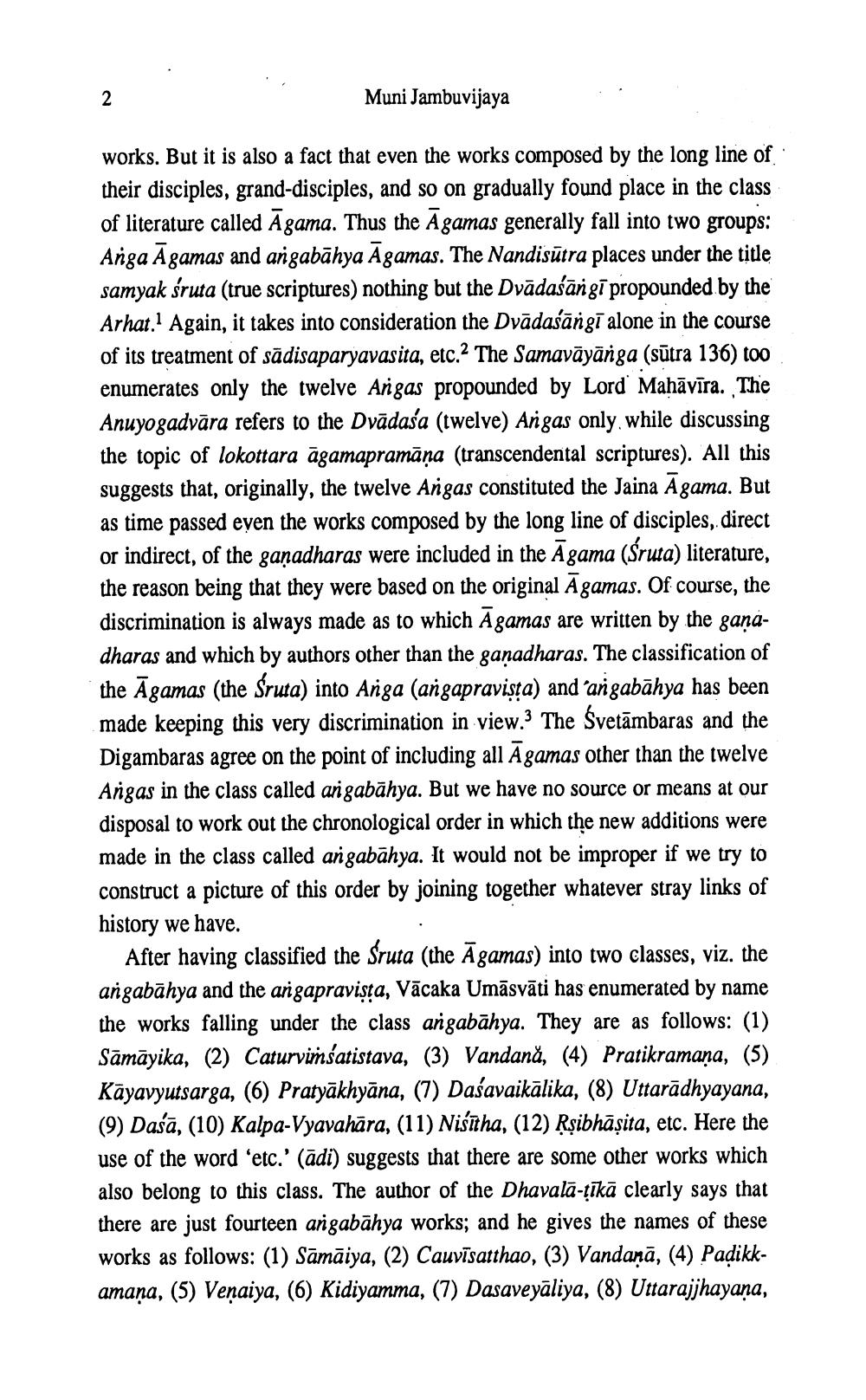Book Title: Jaina Agama Series Author(s): Jambuvijay Publisher: Jambuvijay View full book textPage 2
________________ Muni Jambuvijaya works. But it is also a fact that even the works composed by the long line of their disciples, grand-disciples, and so on gradually found place in the class of literature called Agama. Thus the Agamas generally fall into two groups: Anga Āgamas and angabāhya Āgamas. The Nandisūtra places under the title samyak śruta (true scriptures) nothing but the Dvādaśāngī propounded by the Arhat.' Again, it takes into consideration the Dvādaśāngī alone in the course of its treatment of sādisaparyavasita, etc. The Samavāyānga (sūtra 136) too enumerates only the twelve Angas propounded by Lord' Mahāvīra. The Anuyogadvāra refers to the Dvādaśa (twelve) Angas only, while discussing the topic of lokottara āgamapramāņa (transcendental scriptures). All this suggests that, originally, the twelve Angas constituted the Jaina Āgama. But as time passed even the works composed by the long line of disciples, direct or indirect, of the ganadharas were included in the Agama (Sruta) literature, the reason being that they were based on the original Āgamas. Of course, the discrimination is always made as to which Agamas are written by the ganadharas and which by authors other than the gañadharas. The classification of the Āgamas (the Sruta) into Anga (angapravista) and 'angabāhya has been made keeping this very discrimination in view. The Svetāmbaras and the Digambaras agree on the point of including all Āgamas other than the twelve Angas in the class called argabāhya. But we have no source or means at our disposal to work out the chronological order in which the new additions were made in the class called angabāhya. It would not be improper if we try to construct a picture of this order by joining together whatever stray links of history we have. After having classified the Sruta (the Āgamas) into two classes, viz. the angabāhya and the angapravista, Vācaka Umāsvāti has enumerated by name the works falling under the class angabāhya. They are as follows: (1) Sāmāyika, (2) Caturvimšatistava, (3) Vandană, (4) Pratikramana, (5) Kāyavyutsarga, (6) Pratyākhyāna, (7) Daśavaikālika, (8) Uttarādhyayana, (9) Dašā, (10) Kalpa-Vyavahāra, (11) Nisītha, (12) Řşibhāșita, etc. Here the use of the word 'etc.' (ādi) suggests that there are some other works which also belong to this class. The author of the Dhavalā-tīkā clearly says that there are just fourteen argabāhya works; and he gives the names of these works as follows: (1) Sāmāiya, (2) Cauvīsatthao, (3) Vandanā, (4) Padikkamaņa, (5) Veņaiya, (6) Kidiyamma, (7) Dasaveyāliya, (8) Uttarajjhayaņa,Page Navigation
1 2 3 4 5 6 7 8 9 10 11 12
